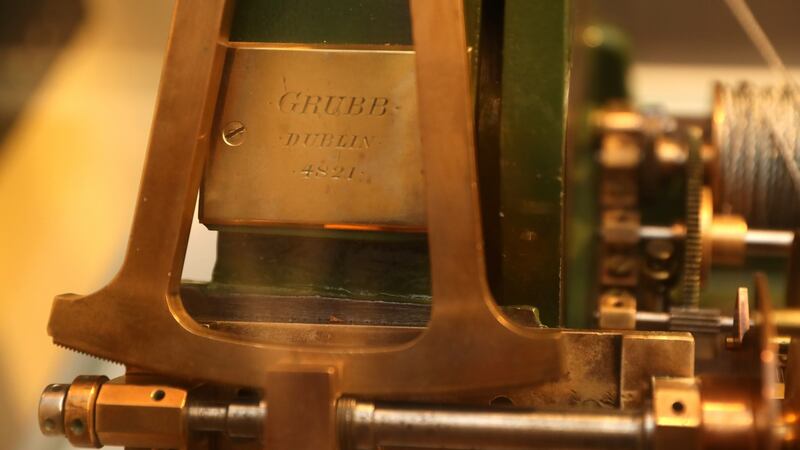I was late for an appointment with my chiropractor when I spotted the book. It jumped out at me from a prime position on a front-window shelf of a charity shop on Dundrum’s main street in Dublin.
Over the years, I had often asked by devotees of the illustrious but largely hidden history of Irish science and technology, if it was still in print, or if anyone had seen a copy available online. Delighted at the prospect of finally acquiring my own copy – and one clearly in good nick – I made a mental note to purchase it after what is invariably an intense session working on knotted muscles.
Later, stepping out on the street in my usual daze, I was immediately distracted by a phone call that dragged on. I walked homewards and forgot to go back and make my purchase of Mary Mulvihill's Ingenious Ireland. I returned a few days later to find it was gone – and not merely moved inside to the non-fiction section.

That was two years ago. However, I got a second chance, unexpectedly, in late 2019, when Four Courts Press re-issued Mulvihill’s book, first published in 2002.
While the book has been reviewed elsewhere, this column offers another view on its significance. The Irish are reputed to have the gift of the gab, the renowned astrophysicist Jocelyn Bell Burnell notes in the preface to the second edition; so Ireland is a place where writers and poets are revered; scientists do not get much of a look in.
Ingenious Ireland, “the county-by-county exploration of Irish mysteries”, rebalances matters between magnificent literary history and the contribution our scientists in the broadest sense have made. “Scientists” in this case include engineers; naturalists, inventors, physicists, climatologists (long before their discipline was recognised) and geographers; those whose global legacy cannot be disputed.
Moreover, Mulvihill encapsulates endeavour brilliantly, thereby revealing why scientists combined to put Ireland at the forefront of experimentation, technological development and discovery during the 19th and early 20th century. There have been, admittedly, more than a few hot shots since.
Critically, what was originally supposed to be a directory of visitor centres turned into a six-year odyssey, where listings were transformed into short, yet in many ways definitive, accounts of many who merit the title colossus.
The breadth of the book, however, goes beyond individuals. It ranges from natural history to industrialisation to sociology, but as you delve deeper into it, what binds it so strongly becomes more obvious; the sense of place – whether that is Irish topography before arrival of humans or the subsequent built environment.
Being from Waterford, I took a close look at what she wrote about that area and its scientific trail-blazers. It was birthplace of Robert Boyle of Boyle's Law fame and Ernest Walton, who helped split the atom. The former heralded the end of alchemy and start of modern chemistry, while the latter transformed lithium into helium, "a modern act of alchemy".
In the 17th century, Boyle sought to transmute the elements and 300 years later Walton and Cockroft achieved it, says Mulvihill. Her detail and quirkiness adds to the mix at every turn. So within my territory there is the invention of bacon rashers and cream cracker biscuits; the Copper Coast, the establishment of Crystal City and the connection with England's Galileo (Thomas Harriot).
We live in the era of short attention spans and bite-size content, Ingenious Ireland is for this time; the perfect alternative to screen time. It even has its own listicles, notably Ireland's top 10 treasures including the Burren, Birr telescope and our raised and blanket bogs with the observation, "we urgently need to conserve and treasure what little is left of these ecosystems" – we realise now their vital role in capturing carbon. The opening chapter is a beautifully succinct account of the physical emergence of the island of Ireland.
Though Mulvihill, a supreme science communicator, died in 2015, her greatest work in print, Ingenious Ireland, has re-asserted itself and sits with the best Irish science books of recent times including Humanology: A Scientist's Guide to Our Amazing Existence (Luke O'Neill – Gill Books); The Psychobiotic Revolution (John Cryan and Ted Dinan – National Geographic books) and The Ascent of John Tyndall: Victorian Scientist, Mountaineer, and Public Intellectual (Roland Jackson – Oxford University Press).
DCU and Dublin Port Company are to be commended for supporting its republication, which enabled a book of almost 500 pages to sell for €19.95 – and offering no excuse to those who missed buying it before.












